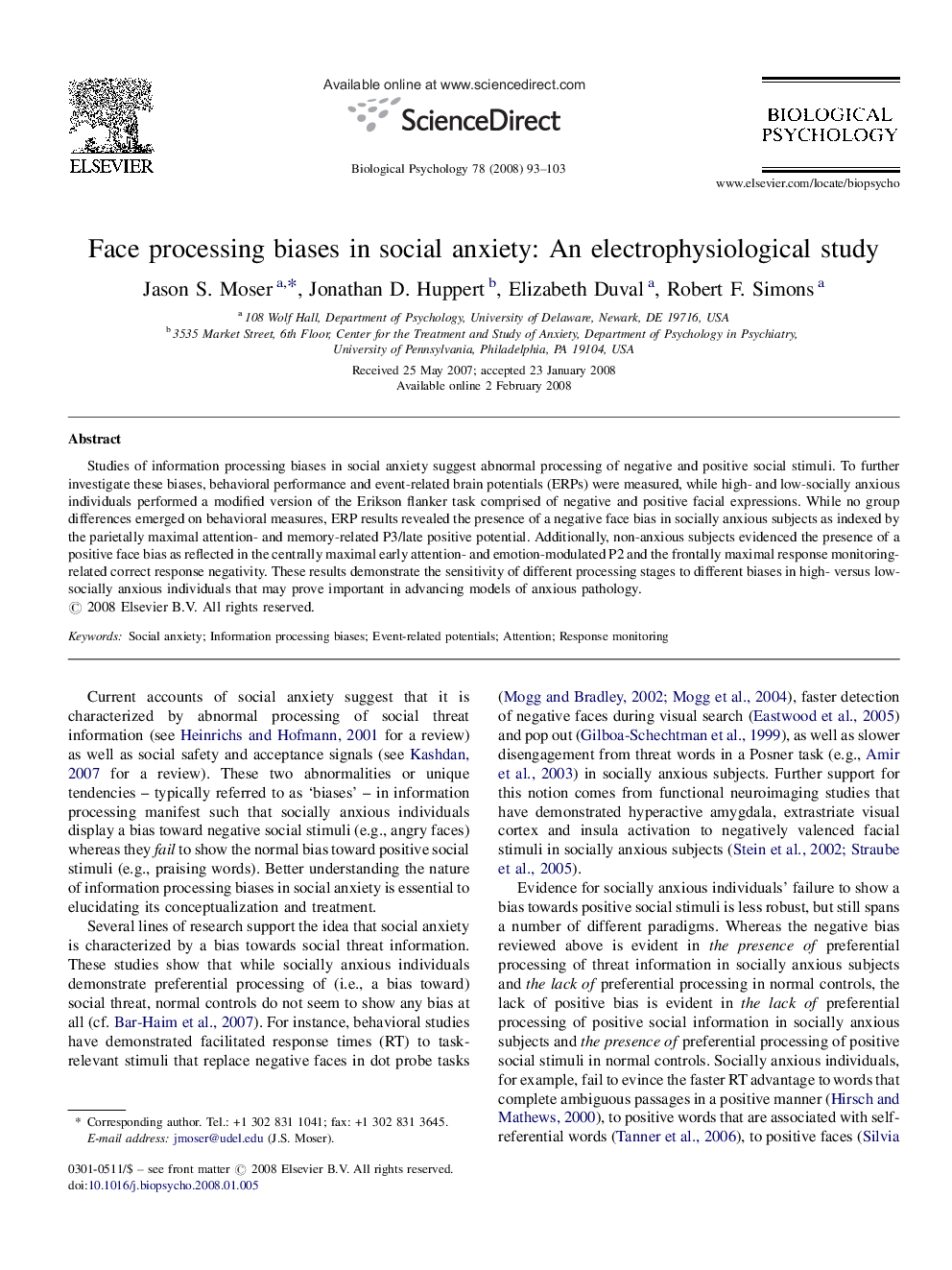| Article ID | Journal | Published Year | Pages | File Type |
|---|---|---|---|---|
| 921645 | Biological Psychology | 2008 | 11 Pages |
Studies of information processing biases in social anxiety suggest abnormal processing of negative and positive social stimuli. To further investigate these biases, behavioral performance and event-related brain potentials (ERPs) were measured, while high- and low-socially anxious individuals performed a modified version of the Erikson flanker task comprised of negative and positive facial expressions. While no group differences emerged on behavioral measures, ERP results revealed the presence of a negative face bias in socially anxious subjects as indexed by the parietally maximal attention- and memory-related P3/late positive potential. Additionally, non-anxious subjects evidenced the presence of a positive face bias as reflected in the centrally maximal early attention- and emotion-modulated P2 and the frontally maximal response monitoring-related correct response negativity. These results demonstrate the sensitivity of different processing stages to different biases in high- versus low-socially anxious individuals that may prove important in advancing models of anxious pathology.
